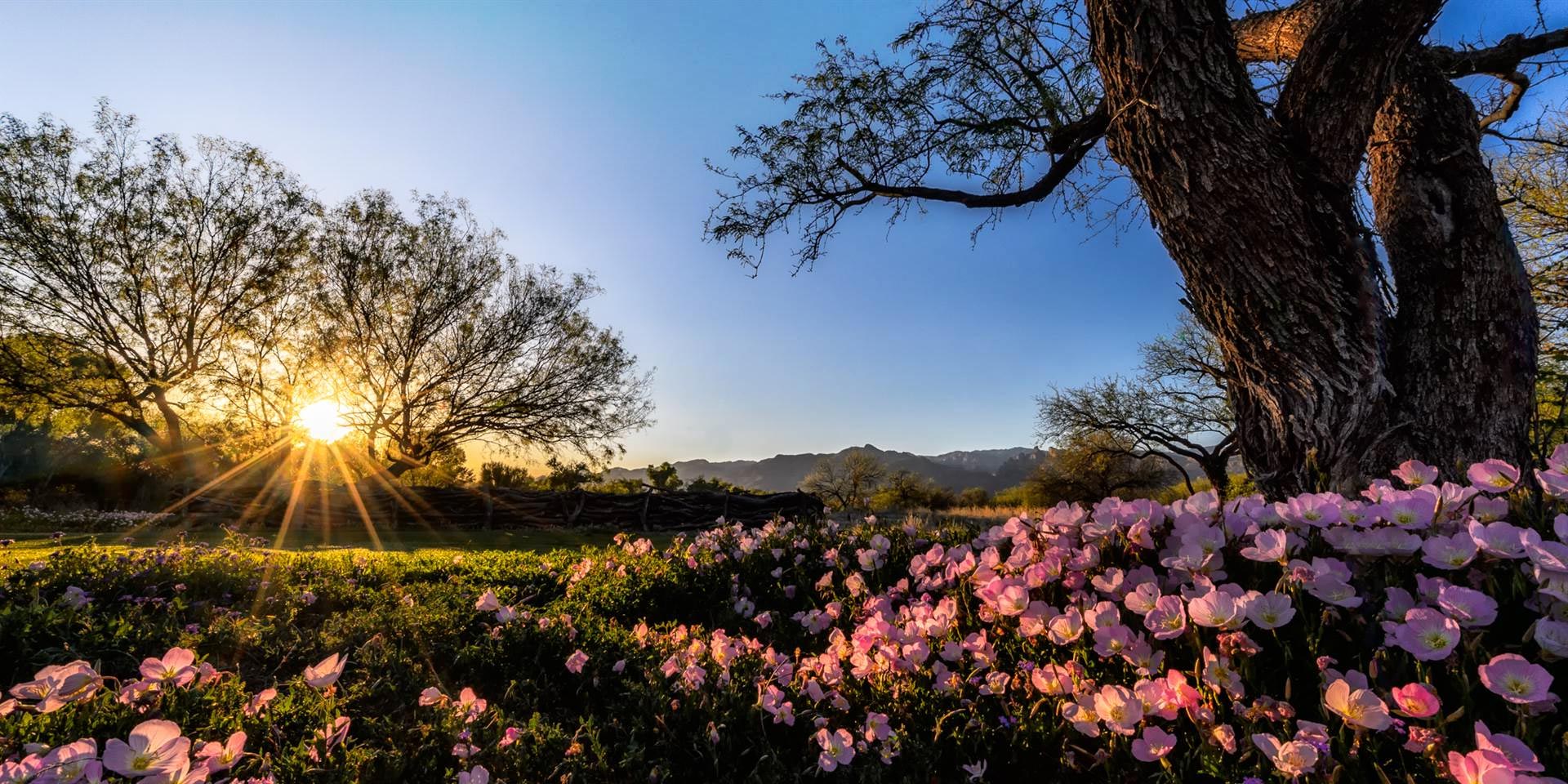Conservation original
Conservation Committee Partners with Tucson Cactus and Succulent Society to Continue Restoration Site in Ironwood Forest National Monument.
Since 2010 AZNPS volunteers have worked to restore an 18-acre Saguaro-Palo Verde bajada that had been bladed of native plants and completely infested with buffelgrass. The restoration has been clearly successful with the establishment of well over 100 native species, including over 2000 native Palo Verdes and Ironwoods. This Waterman Restoration site is located on Dept of Interior, Bureau of Land Management (BLM) land within the boundaries of Ironwood Forest National Monument, west of the town of Marana, near Silverbell Mine. A Department of Interior grant is funding the creation of interpretive signage that will detail the work done to accomplish the restoration.
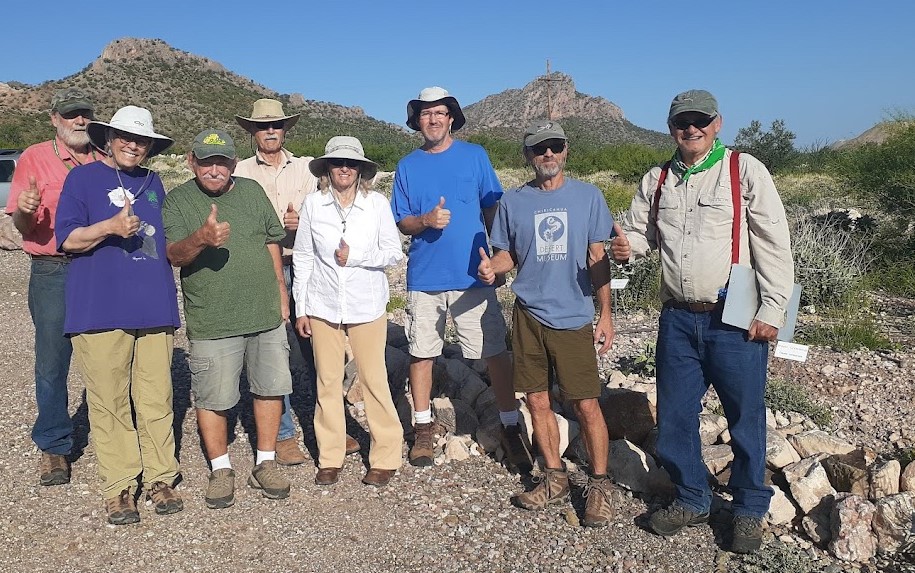
Since 1999 Tucson Cactus and Succulent Society(TCSS) has worked to rescue native cacti and succulents on land that is on the verge of being bladed in Pima County. Over the years TCSS has rescued well over 120,000 cacti and succulents.
Now, through a cooperative agreement, these two Arizona non-profits will work to bring rescued saguaros (Carnegiea gigantea) to the 18-acre Waterman restoration area. TCSS will provide saguaros based on availability of rescues. AZNPS will provide transportation, planting and care of the survival of the transplants until they are able to thrive on their own.
The AZNPS Conservation committee has made a 10 year agreement with Tucson Cactus and Succulent Society to receive little saguaros coming out of salvage rescue operations.

TCSS will provide potted saguaros and AZNPS volunteers will transplant the saguaros onto the site. There are over 2000 young ironwood and palo verde “mothers trees” willing and able to nurse the young cacti! AZNPS members will be invited to assist and observe saguaro cacti transplantings when they occur.
More about Tucson Cactus and Succulent Society
Note: The following information is being relocated to a new page, “Conservation Archives“.
The topic of conservation of native plants in Arizona has been reported in many AZNPS publications. We invite you to view these special extracts from previous editions of The Plant Press and other resources:
| What You’ll See | Article Title with Link | Brief Description |
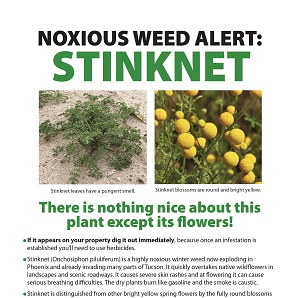 | Stinknet Poster | Small downloadable poster with information about Stinknet. |
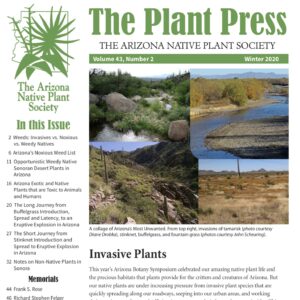 | Weeds Invasives vs Noxious vs Weedy Natives | The 2020 Arizona Botany Symposium celebrated our amazing native plant life and the precious habitats that plants provide for the critters and creatures of Arizona. But our native plants are under increasing pressure from invasive plant species that are quickly spreading along our roadways, seeping into our urban areas, and working their way into our “untouched” riparian waterways, bajadas, and mountainsides. This issue of The Plant Press (Winter 2020) is dedicated entirely to the understanding of the invasiveness of plant species. |
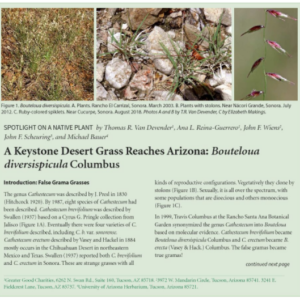 | A Keystone Desert Grass Reaches Arizona | Bouteloua diversispicula is a keystone species in large portions of the Plains of Sonora Subdivision in central Sonora, where it plays an important ecological role in binding fragile desert soils. |
 | The Long Journey from Buffelgrass | Buffelgrass (Pennisetum ciliare) has become the most notorious noxious weed in southern Arizona. |
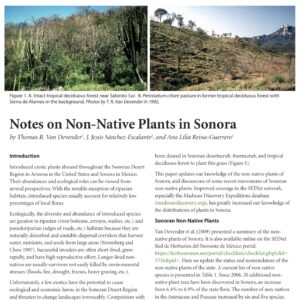 | Notes on Non-Native Plants in Sonora | With the notable exception of riparian habitats, introduced species usually account for relatively low percentages of local floras. |
 | Opportunistic Weedy Native Sonoran Desert | These plants pose serious threats as ecosystem weeds that displace indigenous species and disrupt ecosystem processes, especially by altering the fire regimes of our desert plant communities that did not evolve with fire. |
 | Arizona Exotic and Native Plants that are Toxic | In this article only those plants, native or exotic to Arizona, and which pose the greatest risk to animals will be listed. |
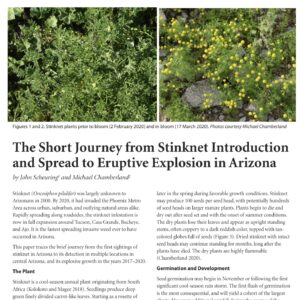 | The Short Journey from Stinknet Introduction and Spread to Eruptive Explosion in Arizona by John Scheuring1 and Michael Chamberland | Stinknet (Oncosiphon pilulifer) was largely unknown to Arizonans in 2000. By 2020, it had invaded the Phoenix Metro Area across urban, suburban, and outlying natural areas alike. Rapidly spreading along roadsides, the stinknet infestation is now in full expansion around Tucson, Casa Grande, Buckeye, and Ajo. It is the fastest spreading invasive weed ever to have occurred in Arizona. This paper traces the brief journey from the first sightings of stinknet in Arizona to its detection in multiple locations in central Arizona, and its explosive growth in the years 2017–2020. |
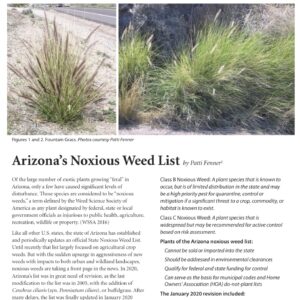 | Arizona’s Noxious Weed List by Patti Fenner |
Of the large number of exotic plants growing “feral” in Arizona, only a few have caused significant levels of disturbance. Those species are considered to be “noxious weeds,” a term defined by the Weed Science Society of America as any plant designated by federal, state or local government officials as injurious to public health, agriculture, recreation, wildlife or property. |

